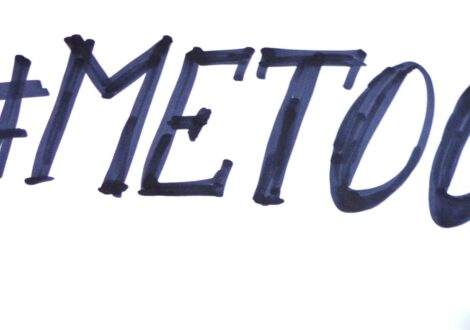
The media debate surrounding sexual harassment, sexism, and cross-border behavior continues. The media debate somewhat overshadows the law and it is therefore important that employers are aware of their obligations. This article deals with how sexual harassment cases should be handled in the workplace.
Sexual harassment can have serious consequences for the employee being harassed. However, the consequence for employees who may un-justifiably be accused of harassing can also be very serious. Cases of sexual harassment can also impact the working environment and the employer’s reputation. In addition, there is also the risk that the employer can be held vicariously liable for the acts of the harasser and be ordered to pay compensation to the employee who has been subjected to sexual harassment.
Sexual harassment is unwanted behavior of a sexual nature. In many cases, it is men who engage in sexual harassment against women, typically in situations where the man is a position of power which he exploits towards the woman. However, it can of course easily be the other way. Recent studies indicate that men are exposed to sexual harassment to a greater extent than previously thought. In a survey conducted among HK members, 28.2% of men state that they have been exposed to sexually abusive behavior at work, while the same applies to 23.5% of women. Sexual harassment, however, should not just be looked at from a male/female perspective as it can happen to employees of any gender or sexual orientation. It can be carried out by anyone of the same sex, opposite sex or anyone of any gen-der identity.
Recent media reports have high-lighted that sexual harassment is found in all corners of the labor market. Recently, it has been front-page news that a significant number of employees in the trade union movement have encountered sexual harassment and sexism in the movement.
There is a distinction between sexual harassment and sexism. Sexism can be described as prejudice or discrimination based on gender. In the 1960s, feminist scholars used the term sexism as a parallel to the term racism. The term is especially used in connection with the downgrading of women. If someone says that “women do not have much between the ears” or “men are aggressive”, it will be sexism, however it does not follow that it will also be sexual harassment.
It is important for all employers to ensure that they set the tone for communication and interaction within the workplace. Employers should produce guidelines for what is acceptable behavior and the consequences for breaching of those guidelines.
In recent times, there has been a focus on whether it is for the employer to show that it was unaware of sexual harassment taking place in the work place to try and avoid liability and this is discussed in more detail in this article.
What does the law say?
It follows from the Equal Treatment Act, section 1, subsection 2, that sexual harassment must be considered discrimination on the grounds of sex and is therefore prohibited. According to the Equal Treatment Act, section 1, subsection 6, sexual harassment is defined as “engaging in any form of unwanted verbal, non-verbal or physical conduct with sexual undertones for the purpose or effect of violating a person’s dignity, in particular by creating a threatening, hostile, degrading, humiliating or unpleasant environment” .
Section 4 of the Equal Treatment Act prohibits employers from exposing employees to gender-discriminatory working conditions. This provision is considered in practice, to have been violated when an employee is subjected to sexual harassment in a work situation.
In the case of sexual harassment, there must be unwelcome physical, verbal or non-verbal behavior of a sexual nature. Sexual harassment of a physical nature can be kisses, touches or the like, while verbal harassment can consist of sexual questions or comments. Non-verbal behavior could, for example be the presentation of photos with a sexual content.
In the case of sexual harassment, the conduct must also be unwanted by the recipient. It is the recipient’s subjective assessment that determines whether the conduct is unwanted and not the harasser’s intentions or views on what the conduct was.
The provisions of the Equal Treatment Act do not define a limit for when sexual behavior objectively becomes sexual harassment. It may differ from person to person and from situation to situation. There-fore, from an employer’s perspective it can be difficult to identify when sexual harassment takes place
Workplace culture
The courts have, in some cases held that, where due to the general work-place communication that was casual, informal and involved banter the events could not be considered offensive ‘enough’ to give the employee reason to feel sexually harassed on the basis of the general work place culture.
Most recently in a judgment handed down on 25 January 2019, the High Court found that a joke about a corn cob with clear sexual undertones, was not intended or had the effect of violating a person’s dignity, and that the performance of the joke there-fore did not have the character of sexual harassment, in accordance with the Equal Treatment Act, section 1, subsection. 6.
However, this poses the question as whether in light of the #MeToo movement the decision would be the same today?? As a company, can you no longer just apologize for the fact that the culture is informal?
In December 2018, a bill was passed that did away with previous practices regarding culture in the workplace as a defence to a sexual harassment claim. The amendment to section 4 of the Equal Treatment Act, means that, the courts must now take into account the nature of the event(s) and assess whether particular behaviour or communication would have been regarded as unacceptable at a workplace with a more professional or restrictive tone of communication. The amendment came into force on 1 January 2019.
What does an employer know and what does an employer need to know?
If an employer is notified of unwanted sexual behavior by employees or former employees, there is a duty to investigate whether the alleged sexual harassment has taken place and whether action needs to be taken against the individual(s) involved.
The burden of proof is shared in cases of sexual harassment. It thus follows from section 16a of the Equal Treatment Act, that if a person who considers themselves to have been sexually harassed demonstrates facts supporting the allegation, this gives rise to the presumption of direct or indirect discrimination. It is then in-cumbent on the other party to prove that the principle of equal treatment has not been infringed. In practice, this means that the burden of proof is reversed, if the aggrieved party can, on the balance of probabilities prove that an infringement has taken place, that the employer must prove that no infringement has taken place.
Who will be liable?
An employer may be liable for the actions for the person who has carried out the harassment. This principle was established in a 1992 judgment (U1993.331SH). In the case in question, the court found that a butler had sexually harassed a steward, the events taking place on a ship. The complaints included both verbal and physical harassment in that the butler repeatedly touched the stewardess’ breasts and thighs and had pressed against her. The butler’s employer, who was a shipping company, was liable for the harassment and had to pay compensation, as the master, who was the shipping company’s representative present on the ship, was aware of the matter and had an extensive duty to protect the employees whilst on the ship and he had not complied with that duty.
Similarly, in a case from 2015 (Western High Court judgment of 28 January 2015, B-2116-13), a business owner (and employer) was responsible for the abusive actions of a male employee towards a student. The claim for compensation under the Equal Treatment Act could there-fore be directed against the business owner / employer. The high court in this case assessed that the student had demonstrated factual circum-stances which gave reason to believe that direct or indirect discrimination had occurred thus satisfying 16a of the Equal Treatment Act. The business owner had not shifted the bur-den of proof that the principle of equal treatment had not been violated, and therefore the student was entitled to compensation for illegal discrimination on the grounds of sex, cf. the Equal Treatment Act.
The claim for compensation could be directed against the business owner as the person responsible for the actions of the male employee employed as education manager for the student. The High Court did not con-sider the male employee’s actions to be such abnormal actions that the business owner could not anticipate, with the consequence that the employer could avoid paying the compensation claim. The business owner was therefore responsible for the actions of the male employee.
Compensation
It is a basic principle of Danish tort law that there is only a right to compensation for damage if there has been a financial loss. In addition, in certain cases, compensation can be awarded for non-pecuniary damage. Compensation for non-pecuniary damage is characterized by the fact that the assessment of the damage is based on more subjective criteria such as suffering, tort, discomfort, etc. There are special rules in this regard in section 26 of the Liability Act. Pursuant to section 14 of the Equal Treatment Act, persons whose rights have been violated, including sexual harassment, may be awarded compensation for non-pecuniary damage.
A study prepared by Aalborg University shows that the average compensation in civil cases from the period 1989-2015 was DKK 23,700. This is unsurprising as in historic cases, compensation has tended to be higher, for example DKK 10,000, whilst in more recently compensation awards of DKK 25,000.
One earlier case from 1991 is particularly noteworthy due to compensation of DKK 100,000 being awarded pursuant to section 14 of the Equal Treatment Act for violation of section 4 of the Equal Treatment Act. The amount was set at such a high amount because the sexual behavior had taken place over a long period of time despite the employee’s protests. It was an aggravating circumstance that the employee had to share an office with the offender and that he was her immediate boss. It was also a gross breach of the employment relationship on the part of the employer, as the conduct was undesirable and of such a nature that no employee should accept it. The employee was therefore also entitled to terminate the employment relationship and demand compensation for salary during a notice period, cf. section 2 and section 3 of the Salaried Employees Act.
Case law indicates that in reality only large compensation awards are made in the more serious cases.
The purpose of the amendment to the Equal Treatment Act that came into force on 1 January, 2019, was to raise the compensation level by 1/3.
In a recent case from 2019 (Eastern High Court judgment of 29 May 2019 in case BS-30678/2018), a 19-year-old female sales assistant was awarded DKK 50,00 in compensation for sexual harassment perpetrated by a store manager. The amount of the compensation was determined, taking into account the seriousness of the sexual harassment which consisted of, among other things, the store manager hugging the woman and encouraging her to sit on his lap. In addition, the store manager had offered the woman money to perform sexual acts on him and had licked her on the chest
Reporting sexual harassment
In light of #Metoo, where sexual abuse has been exercised by men in a position of power, e.g between a manager and an employee, employers should consider establishing communication channels so that employees can raise allegations without feeling insecure.
Some companies have created a whistleblower line or hotline where employees can report allegations of sexual harassment. In an article in Berlingske Tidende on 20 September 2020, the American lawyer Amanda Kramer called for companies to make whistleblower schemes in the form of a hotline where employees can call or write anonymously to try and resolve the issue in confidence. In the article Amanda Kramer stated, “I have interviewed hundreds of victims of both sexual as-sault and sexism in my career, and there is a completely different level of vulnerability than in other cases. People do not put facts on the table until they feel safe, and anonymity can be the first step in building trust”.
There are also some companies and organizations that have recently launched questionnaire surveys regarding sexual harassment.
Auch questionnaire and surveys are typically anonymous and are intended to clarify the extent of sexual harassment and / or sexism in the company. The result can therefore give the management a clue as to how big the problem is and what measures may be necessary to remedy it.
The questionnaire may be limited to the respondent’s own experiences with unwanted sexual attention, but it may also be wise to ask whether the respondent has witnessed others experiencing sexual harassment to get a sense of the bigger picture.
How to establish a policy as to what sanctions are to be imposed and to whom?
It is a well-known principle that it can be counter intuitive to investigate oneself. It can undermine the credibility of the investigation and create mistrust of the conclusions. It may, therefore, be wise for companies and organizations to ally with an independent third party to con-duct investigations into sexual harassment on their behalf. In most cases this third party will be a law firm that can uncover what has happened in the specific case or cases.
In cases where a whistleblower, for example, has approached the employer about a specific relationship, the lawyer’s examination will often be organized in such a way that the lawyer focuses on the specific relationship. The investigation will be based on the allegations made, and the lawyer will normally organize a series of interviews with both former (if possible) and current employees.
In addition, the lawyer can review written material in the form of internal emails, private messenger and text messages, meeting notices, meeting minutes, employment con-tracts, collective agreements and written statements prepared by the interviewees themselves. The person against whom the accusations are directed is also naturally a focal point in the investigation.
Based on the investigations, the lawyer will come to a conclusion and give recommendations. The conclusion will state whether it can be considered with sufficient certainty that the incidents amount to sexual harassment based on the legal definition.
Initiative – new executive order on mental health in the working environment.
It is the employer who has the over-all responsibility for ensuring a healthy working environment where no harassment exists. If the employer is made aware that there are employees who have been subjected to sexual abuse in the workplace, it is the employer’s responsibility to ensure that the abuse effectively ceases and to ensure that the aggrieved party receives the necessary assistance.
The new executive order on mental health in the working environment, entered into force on 1 November 2020, and is part of the implementation of the political agreement on a new and improved work environment effort from spring 2019. It follows from the executive order that it is the employer’s responsibility to ensure, that the work “at all stages is planned, organized and carried out in such a way that it is fully justifiable in terms of safety and health in the short and long term in relation to offensive acts”. This also applies to abusive behavior in the form of sexual harassment.
In February 2019, the Danish Work-ng Environment Authority published guidance on abusive acts in the workplace, including reference to bullying and sexual harassment. The guide specifically refers to the Equal Treatment Act and defines sexual harassment as follows: “Offensive acts can occur as sexual harassment. Offensive acts of a sexual nature are all forms of unwanted sexual attention and can be, for example:
• Unwanted touches
• Unwanted verbal suggestion of sexual intercourse
• Vile jokes and comments
• Irrelevant inquiries about sexual topics
• Viewing pornographic material.”
Companies and organizations should, as part of ensuring a safe and healthy working environment absent of harassment, continuously examine the conditions in the work-place. This can be done, for example, in a so-called workplace assessment (APV), which is mandatory.
It would be therefore prudent to consider the formulation of questions about sexual harassment in an APV. Some employees do not want to see themselves as victims of sexual harassment, and therefore answer no to whether they have experienced sexual harassment. Such questions can be reformulated for example, to ask whether employees have ever experienced inappropriate comments or been physically touched in an in-appropriate manner, such questions may be more likely to illicit a yes response.
There also maybe employees who are not aware of what constitutes sexual harassment, and therefore answer no, even though they have been subjected to violations. The Department of Human Rights has conducted a survey on sexual harassment in the restaurant industry, which shows that 30% of all participants answer that they did not know that sexual harassment is prohibited and that the employer has not said anything about it.
A good working environment can also be encouraged through sensible policies that are rooted in the company, with ongoing training and certification on such policies. In addition, company information campaigns can also be a good tool to inform and change attitudes in order to ensure a good and safe working environment.
Reporting of sexual harassment after resignation / inaction.
In cases of sexual harassment, where the harassment by its nature aims to create a threatening, hostile, degrading, humiliating or unpleasant cli-mate, together with the general paradigm shift that has occurred as a result of #MeToo, can lead to many first reports of cases of sexual harassment, several years after the harassment took place. This can also been seen in some of the sexual harassment cases that have been mentioned in the media, many of which have the common theme that they relate to incidents that have occurred many years ago.
When assessing a claim, and whether a person has missed the opportunity to present a claim, passivity some-times comes into play. If an employee or former employee has acted passively, and thus has given the impression that they would not pursue a claim, there is a possibility that they may lose the right to make a claim. There is no specific assessment as to whether there is passivity. It has not yet been tried in the courts whether the fact that the “nature” of sexual harassment, which means that many offenders only draw attention to the violation many years after the violation has taken place, means that there is further access to make an “old” claim for compensation than what is the case in other cases.
Regardless of whether a former employee’s claim for compensation may have been lost through inaction or not, employers should act on the information they receive from former employees and historic allegations from current employees regarding sexual harassment. Of course, it can be difficult to clarify a course of events that has taken place many years ago, and an employer can neither nor should dismiss or expel an employee if there is no evidence that he or she has actually committed sexual harassment. Conversely, an historic allegation regardless of whether the employer’s options for action may be limited, can always be used as an opportunity to rectify an unhealthy culture that may still exist in the company



Thanks to the following contributors to the website: Steen Evald (photograph), Stine Heilmann (photograph), Count Pictures (video), Kunde & Co. A/S (design), WeCode A/S (coding)